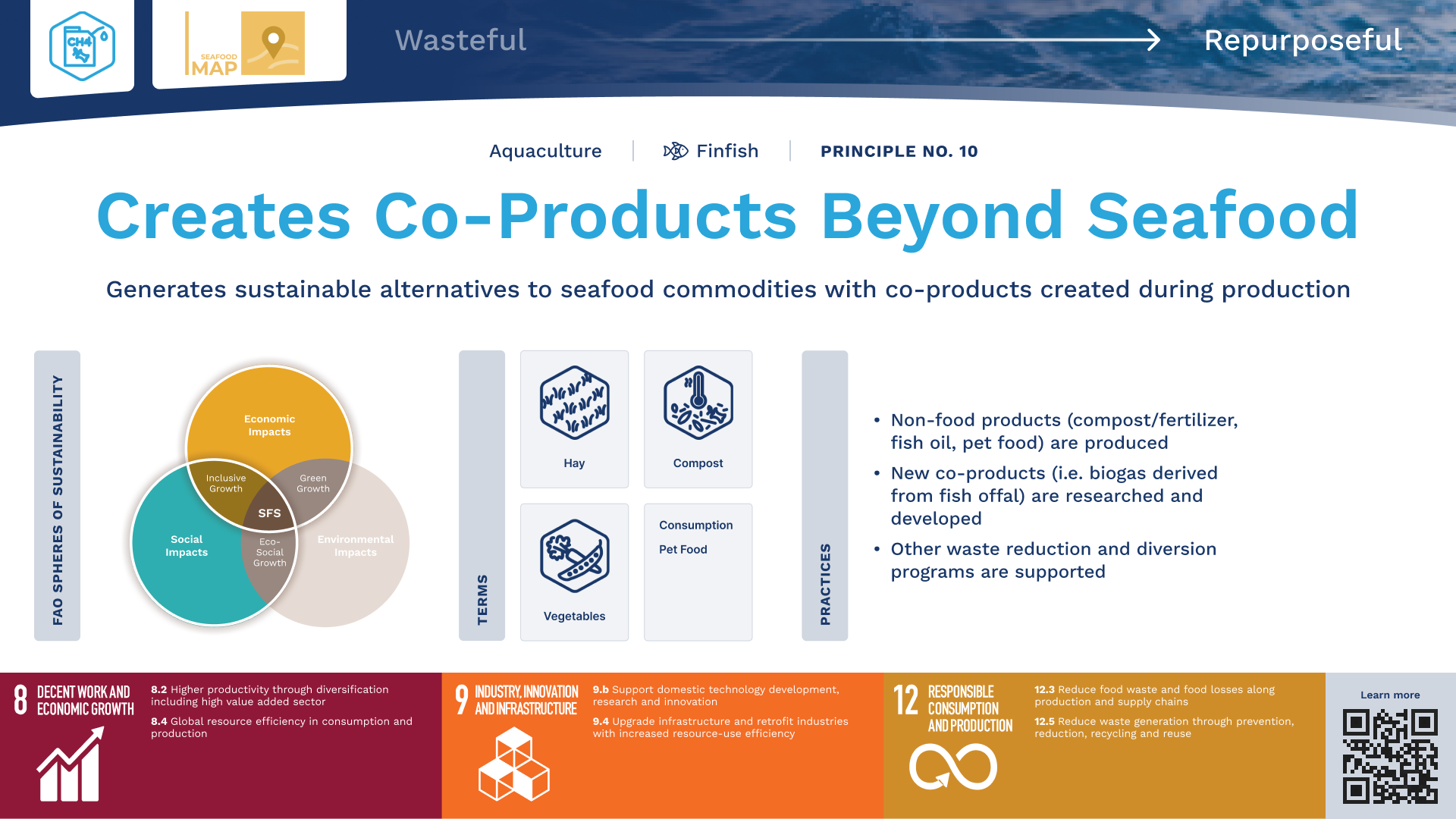Aquaculture – Principle 10 | Seafood MAP
CH4
Key Topics Explained
What co-products can aquaculture create?
Aquaculture has the potential to enable coexisting, complimentary operations. For example it can be possible to grow seaweed alongside marine fisheries. The fish waste supports seaweed growth while the seaweed growth reduces the fish waste fouling. This has environmental benefits as well as poentially allowing greater fishery stocking.
In addition marine seaweed aquaculture could be a complimentary income stream for wild caught fishing operations which often have limited seasons. Many of the assets held by such fishing operations could potentially also be sued for marine seaweed aquaculture.
Aquaculture can be used to grow seaweed which has potential in multiple applications beyond seafood. Today, seaweed is being used for enteric methane reduction in ruminants, creating bio degradeable packaging, cosmetic and medical applications, raw materials for human food production as potential carbon sink material and much more.

N/A
N/A